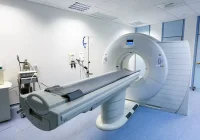Colorectal cancer (CRC) remains a leading global burden, with approximately 1.9 million cases and 0.9 million deaths recorded in 2020. Screening is central to prevention because removing adenomatous polyps can interrupt progression to malignancy. In many programmes, faecal immunochemical testing (FIT) is offered every two years, while CT colonography (CTC) is recommended at five-year intervals. The SAVE randomised controlled trial compared a single CTC examination with three biennial FIT rounds in previously unscreened, average-risk adults, then invited eligible participants to resume biennial FIT after the trial period. A secondary analysis now evaluates long-term outcomes to test whether a five-year interval for CTC is appropriate and whether CTC is associated with earlier diagnosis relative to FIT.
Trial Design and Participation
The trial, conducted in Florence, Italy, randomly assigned 14 981 adults aged 54–65 years to either one CTC examination or three biennial FIT rounds. Adherence differed between groups: of 4825 assigned to CTC, 1286 (26.6%) underwent the examination, of 9288 assigned to FIT, 6027 (64.9%) completed at least one round, with 3105 finishing all three. The analytical cohort therefore included 7313 participants who adhered to assigned screening: 1286 in the CTC arm and 6027 in the FIT arm. Baseline age was similar, but the CTC arm included a higher proportion of men and fewer participants from lower social classes.
Must Read: CT Accuracy in Colon Cancer Staging
After the trial, all participants younger than 70 years were invited to resume biennial FIT through routine population screening. Most trial participants (88.3%, 6459 of 7313) received at least one post-trial invitation. Attendance at post-trial FIT was high overall (73.2%), with higher participation among those initially screened with CTC (78.5%, 1009 of 1286) than among those initially screened with FIT (72.1%, 4344 of 6027).
Cancer and Adenoma Outcomes over 8.4 Years
Outcomes were assessed through registry linkage with a mean follow-up of 8.4 years from the first screening test. CRC incidence did not differ significantly between groups: nine cancers occurred in the CTC arm and 58 in the FIT arm, yielding an adjusted hazard ratio (aHR) of 0.73 (95% CI 0.36–1.47; P = 0.38). Notably, all seven stage IV cancers arose in the FIT arm, and none were detected in the CTC arm. In the CTC arm, one interval CRC was identified within five years of the examination, and no cancers were detected thereafter.
Patterns over time were informative. The cumulative hazard for CRC appeared higher in the CTC arm in early years, converged with the FIT arm around year five, then favoured FIT thereafter. This pattern is consistent with earlier detection at initial imaging. A greater proportion of cancers in the CTC arm were detected during trial screening compared with the FIT arm (88.9% vs 41.4%), reinforcing that early detection concentrated at the baseline CTC examination.
Advanced adenoma (AdA), defined as an adenoma larger than 9 mm, with a villous component over 20% or severe dysplasia, was more frequently detected among those initially screened with CTC. Over follow-up, AdA incidence was significantly higher in the CTC arm (aHR 1.46; 95% CI 1.11–1.92; P = 0.007). The cumulative hazard for AdA showed an early excess in the CTC arm that diminished but persisted by the end of follow-up, again reflecting the yield of the baseline imaging episode. As with CRC, a greater proportion of AdAs in the CTC arm were detected during trial screening than in the FIT arm (91.0% vs 79.2%).
When lesions detected outside the trial screening windows were examined, the CTC arm recorded one CRC within five years and none thereafter, while the FIT arm recorded seven interval cancers within two years of a negative FIT, 13 screening-detected cancers at post-trial FIT and 14 cancers diagnosed beyond two years after the last FIT. Retrospective review of baseline CTC for participants who later developed lesions did not reveal missed abnormalities in the corresponding colonic segments.
Implications, Strengths and Limitations
Taken together, these data support the appropriateness of a five-year interval for CTC in average-risk screening. The concentration of early detections in the CTC arm, absence of stage IV cancers in that arm and the lone interval CRC within five years align with a safety profile compatible with the recommended interval. The persistently higher incidence of AdA following baseline CTC suggests higher sensitivity to precursor lesions compared with FIT, which is generally oriented toward cancer detection. Previous trial findings of fewer false positives with CTC than biennial FIT complement the present long-term outcomes by indicating that higher detection of clinically relevant lesions does not necessarily come with a greater burden of false alerts.
Operational and programmatic considerations remain important. Although post-trial screening participation was high, initial adherence to CTC was lower than to FIT, and the CTC readings in the trial were centralised and performed by experienced radiologists with computer-assisted diagnosis support. Such a reading environment may be challenging to replicate at scale and could influence real-world performance metrics. In addition, advanced adenoma data were derived from an optical colonoscopy database used for screening follow-up, which may underestimate true incidence, and the smaller adherent CTC cohort limited the scope of adjustment for confounders beyond age, sex and socioeconomic status.
In previously unscreened, average-risk adults, a single CT colonography with subsequent routine FIT invitations yielded long-term CRC incidence comparable to three biennial FIT rounds, with no stage IV cancers in the CTC arm and only one interval CRC within five years of CTC. Advanced adenoma incidence remained higher after baseline CTC, consistent with greater sensitivity to precursor lesions. These results support a five-year interval for CT colonography and indicate that initial imaging can be associated with earlier diagnosis relative to biennial FIT, provided implementation factors such as reader expertise, participation and follow-up pathways are maintained.
Source: Radiology
Image Credit: Freepik










